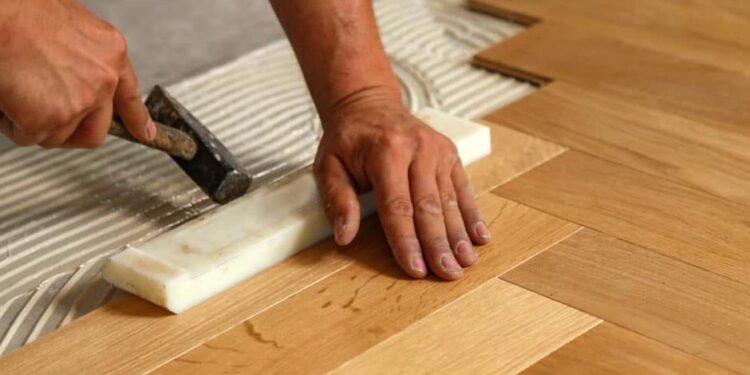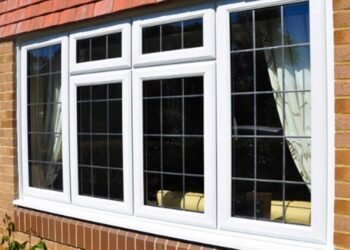When selecting wood flooring for your home or business, aesthetics, durability, and feel play a crucial role in the decision-making process. A significant component of the overall look and feel is the wood floor texture. From the surface finish to the patterns and designs, wood floor texture can transform a room, lending it character, warmth, or modern elegance. In this guide, we’ll explore the primary wood floor textures, styles, and finishes available, helping you make an informed choice that complements your space.
1. Why Wood Floor Texture Matters
The texture of a wood floor is not just a visual element; it also affects how the floor feels underfoot. Textures add a layer of depth to the wood, highlighting its natural beauty and enhancing the color, pattern, and grain. Different textures can evoke different vibes—rustic, antique, contemporary, or luxurious—allowing homeowners to craft a unique aesthetic in their homes. Additionally, some finishes and textures make wood floors easier to maintain and less prone to showing wear and tear.
2. Popular Wood Floor Textures
There are various wood floor textures, each offering a distinct appearance and touch:
a) Smooth Texture
A smooth texture is classic and timeless, achieved by sanding down the wood to a fine, even finish. This type of texture suits modern and minimalist spaces where the simplicity of smooth wood enhances sleek designs. Smooth wood floors are easy to clean and maintain but may show scratches more readily than textured finishes. They are also great for showcasing the natural color and grain of the wood, especially when used with lighter finishes.
b) Wire-Brushed Texture
Wire-brushing involves using a stiff brush to remove the soft fibers from the wood’s surface, leaving the harder grain slightly raised. This technique creates a textured look that masks scratches, dents, and wear, making it perfect for high-traffic areas. Wire-brushed textures are often associated with a rustic, lived-in aesthetic, but they’re also adaptable to contemporary settings, adding a subtle character that is both stylish and practical.
c) Hand-Scraped Texture
Hand-scraped wood flooring mimics the uneven, natural patterns seen in antique wood flooring. Each plank is individually scraped by hand or machine, resulting in a unique look with undulating ridges and grooves. This texture is particularly popular for homeowners seeking a vintage or farmhouse style. Not only does it add charm, but it’s also highly forgiving of minor scratches and dents. Hand-scraped wood floors can create a cozy, worn-in look that works beautifully in family rooms, kitchens, and rustic settings.
d) Distressed Texture
Distressed wood floors are designed to look weathered and worn, with intentional imperfections such as knots, cracks, and dents. This texture is commonly used in industrial, vintage, or rustic designs, as it provides a raw, authentic appearance that seems to have a story to tell. Distressed textures are often complemented with darker stains that emphasize the wood’s imperfections, adding an extra layer of depth and charm. Like hand-scraped textures, distressed finishes are also effective at masking wear and tear.
3. Types of Finishes for Wood Floors
The texture of a wood floor works in tandem with its finish. Here’s a look at the most popular types of wood floor finishes and how they enhance different wood floor textures:
a) Matte Finish
A matte finish provides a low sheen that works well with textured floors such as wire-brushed or distressed styles. This finish absorbs light rather than reflecting it, resulting in a natural and rustic appearance. Matte finishes are also known for their practicality—they hide dirt, scratches, and imperfections, making them ideal for families with pets and children.
b) Satin Finish
Satin finishes strike a balance between gloss and matte, offering a soft, subtle shine that enhances the wood’s natural color and texture without being overly reflective. This finish works well with all textures, particularly smooth or lightly textured wood floors, as it adds a touch of elegance without overpowering the wood’s natural beauty. Satin finishes are also easy to maintain and are a popular choice for both traditional and contemporary settings.
c) Semi-Gloss and High-Gloss Finishes
For a more polished look, semi-gloss and high-gloss finishes add a radiant shine that emphasizes the wood’s grain and color. These finishes are commonly applied to smooth or hand-scraped floors where the goal is to create a refined, luxurious appearance. High-gloss floors can be more challenging to maintain, as they tend to show dust and footprints more easily. However, they are an excellent choice for formal settings and can make smaller spaces feel larger by reflecting light.
d) Oil Finish
An oil finish penetrates the wood, enhancing its natural texture and color while providing a soft, matte appearance. Unlike polyurethane finishes, which sit on top of the wood, oil finishes seep into the wood, nourishing and protecting it from within. This finish pairs well with rustic textures, like hand-scraped and distressed floors, adding warmth and depth. Though they require more maintenance, oil finishes can be spot-repaired without sanding, making them a convenient option for those who appreciate an organic, natural look.
4. Choosing the Right Wood Floor Texture for Your Style
Selecting the right texture involves considering both your aesthetic preferences and practical needs. Here are some examples of how different textures and finishes can complement various design styles:
- Modern Minimalism: Smooth, matte-finished floors in lighter shades offer a clean, streamlined look, creating a sense of openness and serenity.
- Rustic Charm: Hand-scraped or distressed textures in deeper tones work well in rustic or farmhouse-inspired interiors, adding warmth and a sense of history.
- Industrial Chic: Distressed or wire-brushed floors with a matte or oil finish add an edge to industrial spaces, making them feel authentic and rugged.
- Classic Elegance: Smooth or satin finishes with a hint of gloss on darker wood floors exude a timeless, elegant feel, perfect for traditional interiors.
- Beachy Vibes: Lightly textured, wire-brushed wood in a matte finish provides a breezy, coastal aesthetic, bringing a relaxed and airy feel to the room.
5. Textures and Wood Species: Finding the Perfect Match
Not all wood species are suited to every texture. The density and grain patterns of specific wood types can affect how textures appear:
- Oak: Known for its visible grain, oak pairs well with wire-brushed and distressed textures, bringing out the wood’s natural character.
- Hickory: A dense, highly durable wood with unique color variations, hickory is ideal for hand-scraped and distressed textures.
- Maple: With a subtle grain pattern, maple looks best with a smooth or satin finish that enhances its sleek, uniform look.
- Walnut: Dark and luxurious, walnut’s fine grain works well with a smooth or satin finish, creating a refined appearance.
6. Tips for Maintaining Wood Floor Textures
Each wood floor texture requires specific maintenance to preserve its beauty. Here are some general care tips:
- Regular Sweeping: Dirt and debris can scratch wood floors, so regular sweeping or vacuuming is essential, especially for smooth or glossy finishes.
- Area Rugs: Place area rugs in high-traffic areas to protect the wood and reduce wear.
- Avoid Water: To avoid water damage, use a damp, not wet, mop to clean spills and immediately dry them.
- Re-oiling: For oiled finishes, periodic re-oiling will keep the wood nourished and maintain its appearance.
- Refinishing: High-gloss floors may require more frequent refinishing to retain their shine, while matte or satin finishes can go longer between touch-ups.
7. Embracing the Beauty of Wood Floor Texture in Your Space
Wood floor texture is an essential component that brings depth, warmth, and personality to any interior space. Whether you prefer the clean lines of a smooth floor or the character of a distressed, rustic look, understanding the textures, finishes, and maintenance requirements will help you choose the ideal wood floor for your style and lifestyle. Embrace the beauty of wood floor texture, and let it elevate your home, adding a natural touch that lasts for years to come.
Final Thoughts
Choosing the right wood floor texture and finish is a process that combines personal style, practicality, and ambiance. With the right texture, you can transform a space, giving it a distinctive character that feels both timeless and personal. Take the time to explore different textures and finishes, and remember that your choice will shape the atmosphere of your home, adding warmth, elegance, or a sense of history.












